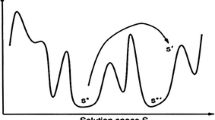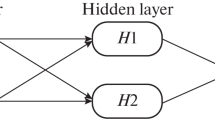Abstract
Today's manufacturing methods are caught between the growing need for quality, high process safety, minimal manufacturing costs, and short manufacturing times. In order to meet these demands, process setting parameters have to be chosen in the best possible way, according to demand on quality. For such optimization it is necessary to represent the processes in a model. Due to the enormous complexity of many processes and the high number of influencing parameters, however, conventional approaches to modelling and optimization are no longer sufficient. In this article it is shown how, by means of applying neural networks for process modelling, even these highly complex interdependencies can be learned. That way both process and quality parameters can be assessed before or during processing. By connecting them with corresponding cost models, it is possible to optimize processes with the help of evolutionary algorithms. Using examples of different manufacturing processes, the possi bilities for process modelling and optimization with neural networks and evolutionary algorithms are demonstrated.
Similar content being viewed by others
References
Cariapa, V., Abkay, K. S. and Rudraraju, R. (1991) Applica tion of neural networks for compliant tool polishing op erations. Journal of Materials Processing Technology, 28, 241–250.
Kruse, R., Nauck, D. and Klawonn, F. (1994) Neuronale Netze und Fuzzy-Systeme. Grundlagen des Konnektionismus Neu ronaler Fuzzy-Systeme und der Kopplung mit Wissenbasierten Methoden. Vieweg-Verlag, Braunschweig.
Monostori, L. (1993) A step towards intelligent manufacturing: modelling and monitoring of manufacturing processes through artificial neural networks. Annals of the CRIP, 42, 485–488.
Nissen, V. (1994) Evolutionäre Algorithmen: Darstellung, Bei spiele, betriebswirtschaftliche Anwendungsmöglichkeiten. PhD Dissertation, Universitäts-Verlag, Wiesbaden.
Pesch, E. (1994) Learning in Automated Manufacturing. A Local Search Approach. Physica-Verlag, Heidelberg.
Rojas, R. (1993) Theorie der neuronalen Netze. Eine systematische EinfuÈhrung. Springer-Verlag, Berlin.
Sakakura, M. and Inasaki, I. (1992) A neural network approach to the decision-making process for grinding operations. An nals of the CIRP, 41, 353–356.
Sathyanarayanan, G., Lin, I. J. and Chen, M.-K. (1992) Neural network modelling and multiobjective optimisation of creep feed grinding of superalloys. International Journal of Pro duction Research, 30, 2421–2438.
Schulte, J. (1995) Werkstattsteuerung mit genetischen Algo rithmen und simulativer Bewertung. PhD Dissertation, Universität Stuttgart, Springer-Verlag, Berlin.
Vikram, C., Kunter, S. A. and Rajesh, R. (1991) Application of neural networks for tool polishing operations. Journal of Materials Processing Technology, 28, 241–250.
Westkämper, E., Lange, D. and Schmidt, T. (1996) Modelling the grinding process with analytical models and artificial networks, in Production Engineering — Annals of the German Society for Production Engineering, Schulz, H., Gerger, M., Tönshoff, H. K. and Westkäamper, E. (eds), Vol. III, Issue 1, pp. 5–10.
Author information
Authors and Affiliations
Rights and permissions
About this article
Cite this article
WESTKÄMPER, E., Schmidt, T. Computer-assisted manufacturing process optimization with neural networks. Journal of Intelligent Manufacturing 9, 289–294 (1998). https://doi.org/10.1023/A:1008966407212
Issue Date:
DOI: https://doi.org/10.1023/A:1008966407212




